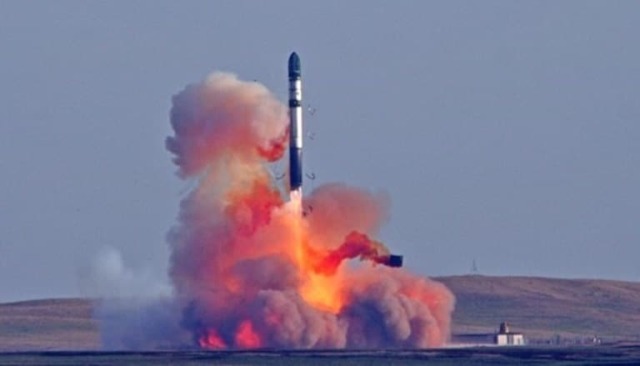The Sarmat missile system has a number of characteristics not previously seen in any intercontinental ballistic missiles.
The head of Roscosmos, Dmitry Rogozin, said the following during a speech on television:
"This year we will replenish the arsenals of strategic nuclear forces with another intercontinental ballistic complex "Sarmat", which will give us guarantees of a safe life for 35-40 years ahead, just as the Voivode complex gave us.
Roscosmos— or rather one of its divisions, the Makeev GRC, is the developer and manufacturer of the Sarmat complex (as well as a number of other intercontinental ballistic missiles). It is on his actions that the completion of work on this system on time depends. Consequently, the new data means a high degree of readiness of the complex and its combat equipment. This is very important for the strategic balance in the world, since it is the only type of ICBM of the fifth generation that is close to being put on combat duty.
It differs sharply in its capabilities from its predecessor, the Voivode (P-36). Firstly, the Sarmat is heavier, more than 200 tons, and has new rocket engines. Like the Voivode, they run on heptyl (fuel) and nitrogen tetraoxide (oxidizer). However, the new engines (the name after the modification is RS-99) are more powerful, and therefore allow you to accelerate the rocket to the desired speeds in a shorter period of time. This dramatically reduces the segment of the trajectory when it can be shot down after takeoff, that is, the probability of intercepting a new missile decreases from this.
Another distinctive feature: this is a suborbital rocket capable of reaching the territory of the United States, as well as any other part of the world, along any trajectory. Its range in relation to targets on our planet is not limited, and it is assumed that it will be able to reach its targets from the south Pole. From the southern direction, Western countries do not have any deployed missile defense systems.
The third important feature of the Sarmat is the ability to equip Avangard combat units actively maneuvering at hypersonic (previously tested). Due to their movement at the boundary of the dense layers of the atmosphere, they move in a plasma cloud. Although this has created noticeable difficulties for developers, it is very difficult to shoot down the combat units themselves on such a trajectory. Existing missile defense systems are not capable of this. If equipped with such blocks, the rocket will be able to carry them in three pieces. When equipped with conventional thermonuclear warheads, without the possibility of active maneuvering, - 10-15 pieces.
Demonstration video showing the capabilities of an actively maneuvering combat unit / © Ministry of Defense
In order to increase the stability of missile silos for Sarmatians, they are planned to be equipped with active protection complexes "Mozyr". This is a package of many artillery barrels that shoot a cloud of balls at a point above the missile silo where the enemy's thermonuclear warhead falls. Meeting with such protection, the enemy's warhead is mechanically destroyed before it gets close to the missile silo at a distance sufficient for detonation. A conventional air thermonuclear explosion cannot disable a missile silo (it is exceptionally strong). A "contact", ground-based detonation is required, but in the presence of a "Trump card" it is not feasible.
With all the advantages of "Sarmat", it has some ambiguous sides. It is claimed that its Avangard combat units can exist in a non-nuclear version. This is logical, since at a speed of several kilometers per second, when hitting the surface, the warhead will give an explosion more significant than what would give a similar weight of TNT. Due to the unlimited range of the Avangard, it will be possible to hit anywhere in the world within about half an hour.
But if Russia really uses such weapons in a conventional war, it is unclear how the US missile attack warning systems will be able to distinguish launches of "non-nuclear" Sarmatians from launches of those "Sarmatians" with a thermonuclear warhead. Probably, the Russian leadership planned to somehow use this moment in negotiations on new START-type treaties, but due to the fact that the United States is not interested in such treaties, now this problem remains unresolved.
An interesting feature of the "Sarmat" is also that, due to the large weight output into space and significant speeds, it can be used almost without alterations to launch satellites into orbit. In a similar way, the "Voivode" was used: after the end of the service, a satellite was placed in its head and launched. Given that Sarmat's capabilities are greater, it will be able to deliver satellites of almost any realistic size into space. However, this will not happen soon: the combat service life of such systems is measured in tens of years.
Recently, the Russian side has been actively demonstrating the adoption and use of such types of weapons, about which not much was previously known. For example, today the Ministry of Defense showed the use of X-31PM missiles in Ukraine. This is the latest anti-radar missile with a range of 260 kilometers for air defense systems (according to other sources up to 280 kilometers). This exceeds the range of operation of any air defense systems of other countries of the world.

